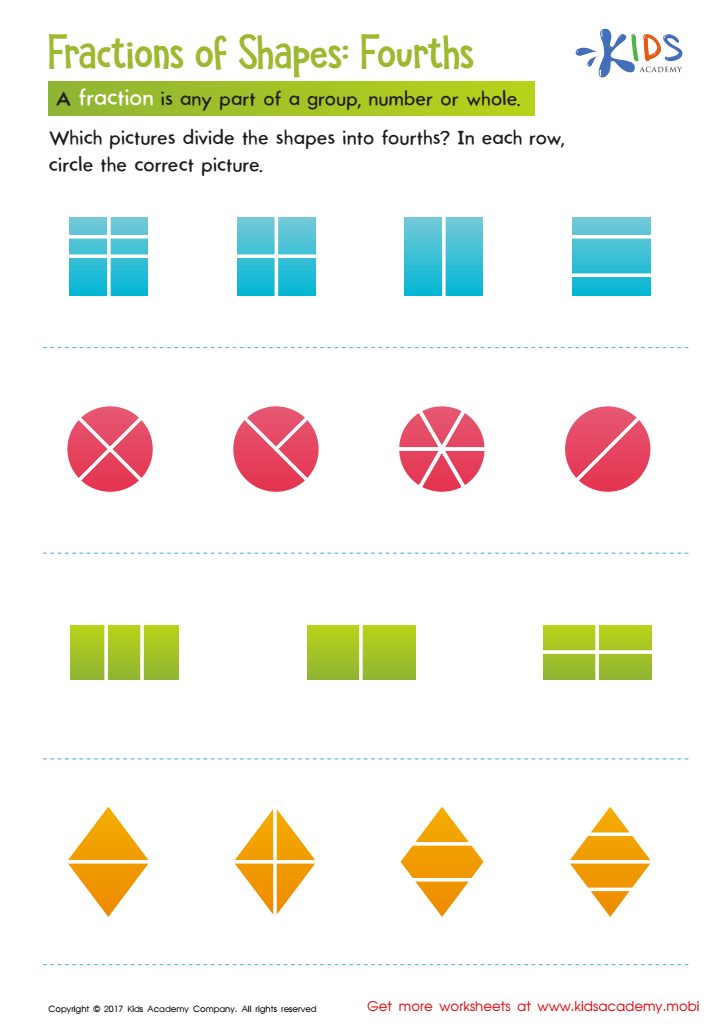Division of shapes Worksheets for Kids
1 filtered results
-
From - To


Fractions of Shapes Worksheet
Question/Answer
How does the mastery of the Division of shapes skill affect a student's performance at an early age?
The mastery of the Division of shapes skill at an early age significantly enhances a student's spatial reasoning, geometry understanding, and problem-solving abilities. It lays a solid foundation for more advanced mathematical concepts, improves cognitive development, and boosts confidence in math-related tasks. This early competency is linked to better academic performance in mathematics and related subjects as the student progresses.
Why is the Division of shapes skill important for Grade 1 students?
The Division of shapes skill is important for Grade 1 students because it lays the foundation for understanding geometry, fractions, and spatial reasoning. By learning to divide shapes, children develop problem-solving skills, enhance their ability to recognize patterns, and improve their mathematical thinking. This foundational knowledge is crucial for their success in more advanced mathematical concepts in later grades.
How to test a Grade 1 student’s Division of shapes skills?
To test a Grade 1 student's Division of shapes skills, provide them with paper shapes (like circles, squares, rectangles) and ask them to fold or cut these shapes into equal parts, such as halves or quarters. Observe their ability to divide the shapes evenly and to identify each part, assessing their understanding of basic division and equal distribution concepts.

 Assign to the classroom
Assign to the classroom












